The Prodoxidae are a family of moths, generally small in size and nondescript in appearance. They include species of moderate pest status, such as the currant shoot borer, and others of considerable ecological and evolutionary interest, such as various species of "yucca moths".
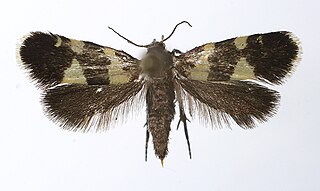
Lampronia luzella is a moth of the family Prodoxidae. It is found in Ireland, Great Britain, the Benelux, France, central Europe, Italy, Fennoscandia, the Baltic region, Russia, Poland, the Czech Republic and Romania.

Lampronia standfussiella is a moth of the family Prodoxidae. It is found in central Europe, including the Alps, Germany, Austria and Poland, north to Finland and Sweden and northern Russia.

Lampronia corticella, the raspberry moth, is a moth of the family Prodoxidae. The species was first described by Carl Linnaeus in his 1758 10th edition of Systema Naturae. It is found in most of Europe, except Iceland, the Iberian Peninsula and the Balkan Peninsula. It is an introduced species in North America, where it was first detected in New Brunswick, Canada, in 1936.

The currant shoot borer moth is a species of moth of the family Prodoxidae. It is found in most of central, northern and eastern Europe. It is also found in North America.
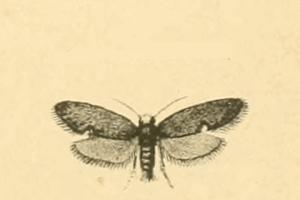
Lampronia aeripennella is a moth of the family Prodoxidae. It is found in Sweden, Finland, France, Austria, Italy and Romania.

Lampronia is a genus of moths of the family Prodoxidae.
Lampronia argillella is a moth of the family Prodoxidae. It is found in Austria, Slovakia and the Caucasus.
Lampronia intermediella is a moth of the family Prodoxidae. It is found in Slovakia and Romania.
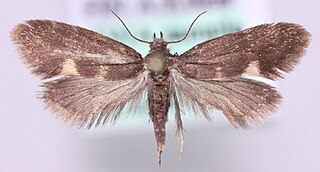
Lampronia morosa is a moth of the family Prodoxidae. It is found in most of Europe, except Ireland, Latvia, Lithuania, Portugal and part of the Balkan Peninsula. It is also present in the Caucasus and Asia Minor.
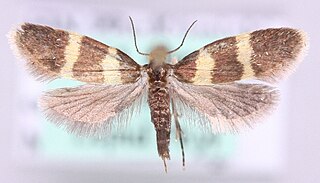
Lampronia redimitella is a moth of the family Prodoxidae. It is found in Fennoscandia, the Baltic region, Poland, the Czech Republic and Germany.
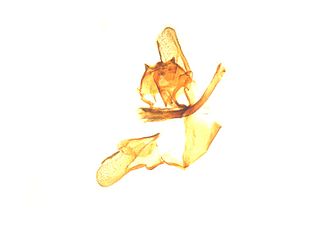
Lampronia pubicornis is a moth of the family Prodoxidae. It is found in Ireland, Great Britain, France, Spain, Germany, Austria, Hungary and on Sicily, in addition to Venice and occasionally mainland Italy.
Lampronia altaica is a moth of the family Prodoxidae. It is found in the Altai Mountains of central Asia, the Ryanggang Province of North Korea and in Japan.
Lampronia oregonella is a moth of the family Prodoxidae. In North America it is found in British Columbia, Washington, Oregon and Colorado.
Lampronia russatella is a moth of the family Prodoxidae. It is found in mesic forests in eastern North America.
Lampronia taylorella is a moth of the family Prodoxidae. In North America it is found along the coast of British Columbia and in Washington and Montana.
Lampronia sakhalinella is a moth of the family Prodoxidae. It is found on the Sakhalin peninsula in Russia.
Lampronia aenescens is a moth of the family Prodoxidae first described by Walsingham in 1888. In North America it is found in Alberta and ranges west and south through southern British Columbia to northern California and Colorado.
Lampronia humilis is a moth of the family Prodoxidae. In North America it is found in the coastal areas of British Columbia south to northern California.
Lampronia sublustris is a moth of the family Prodoxidae first described by Annette Frances Braun in 1925. In North America it is found from southern British Columbia south to northern California and east to Alberta, Utah and Colorado.







